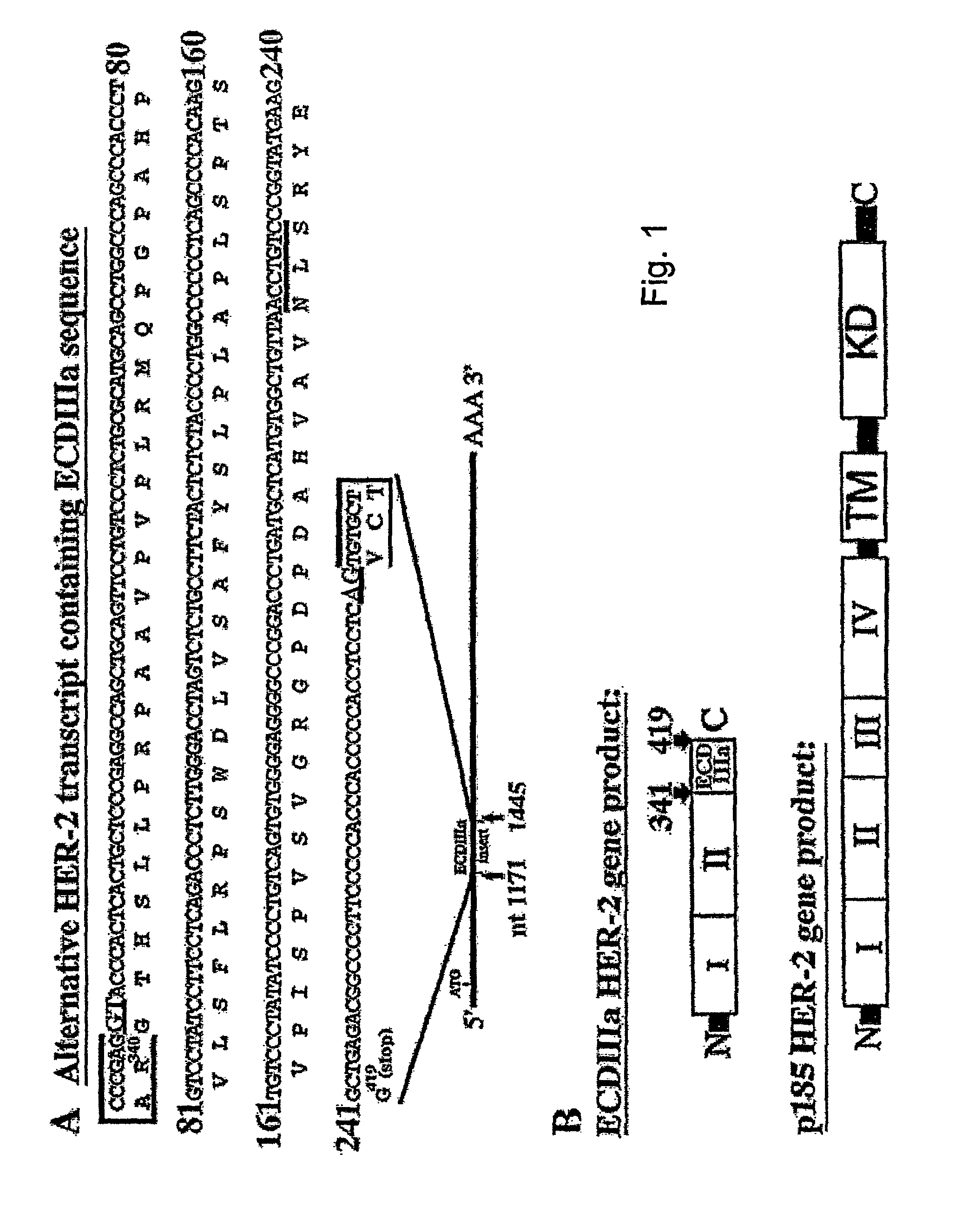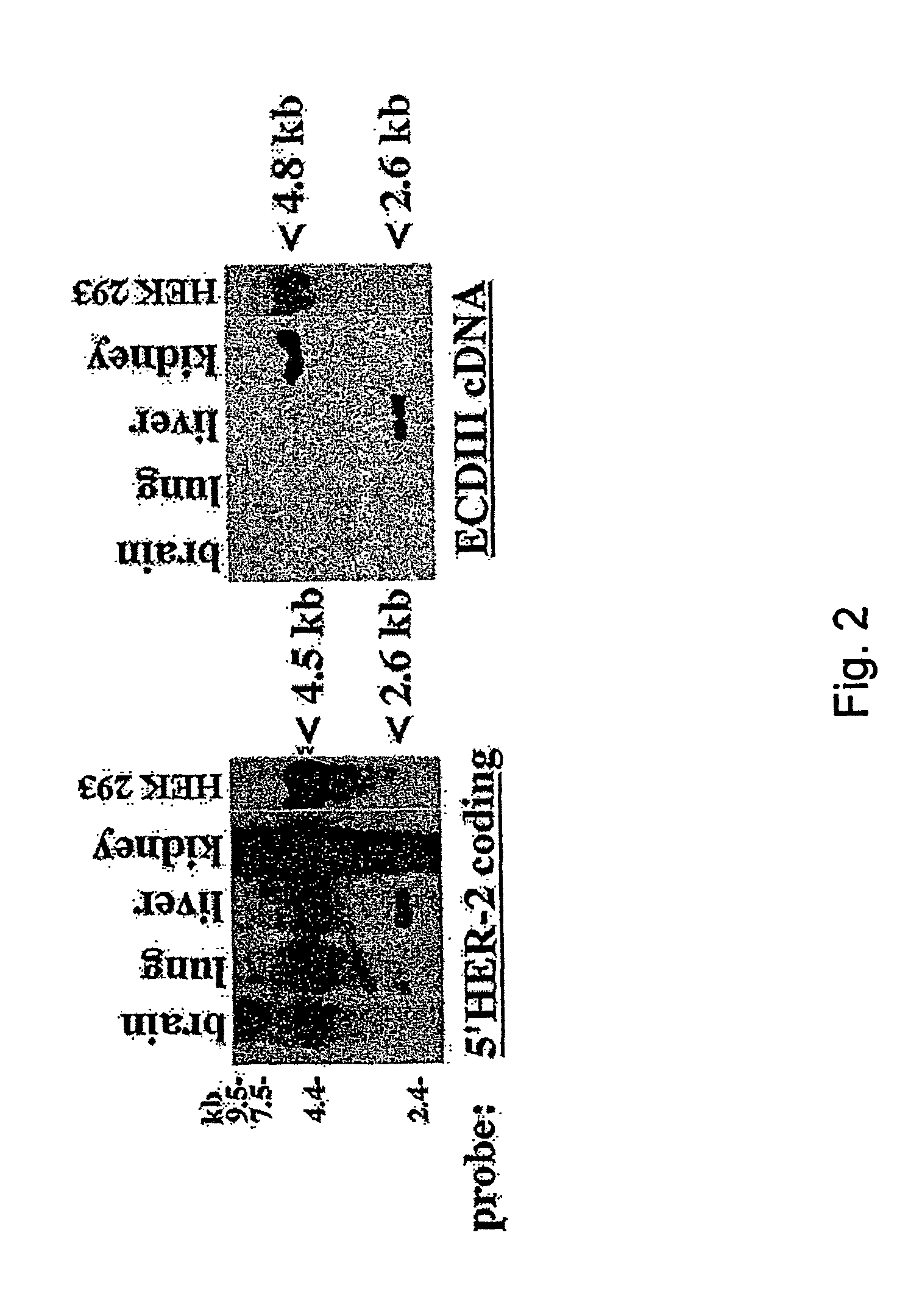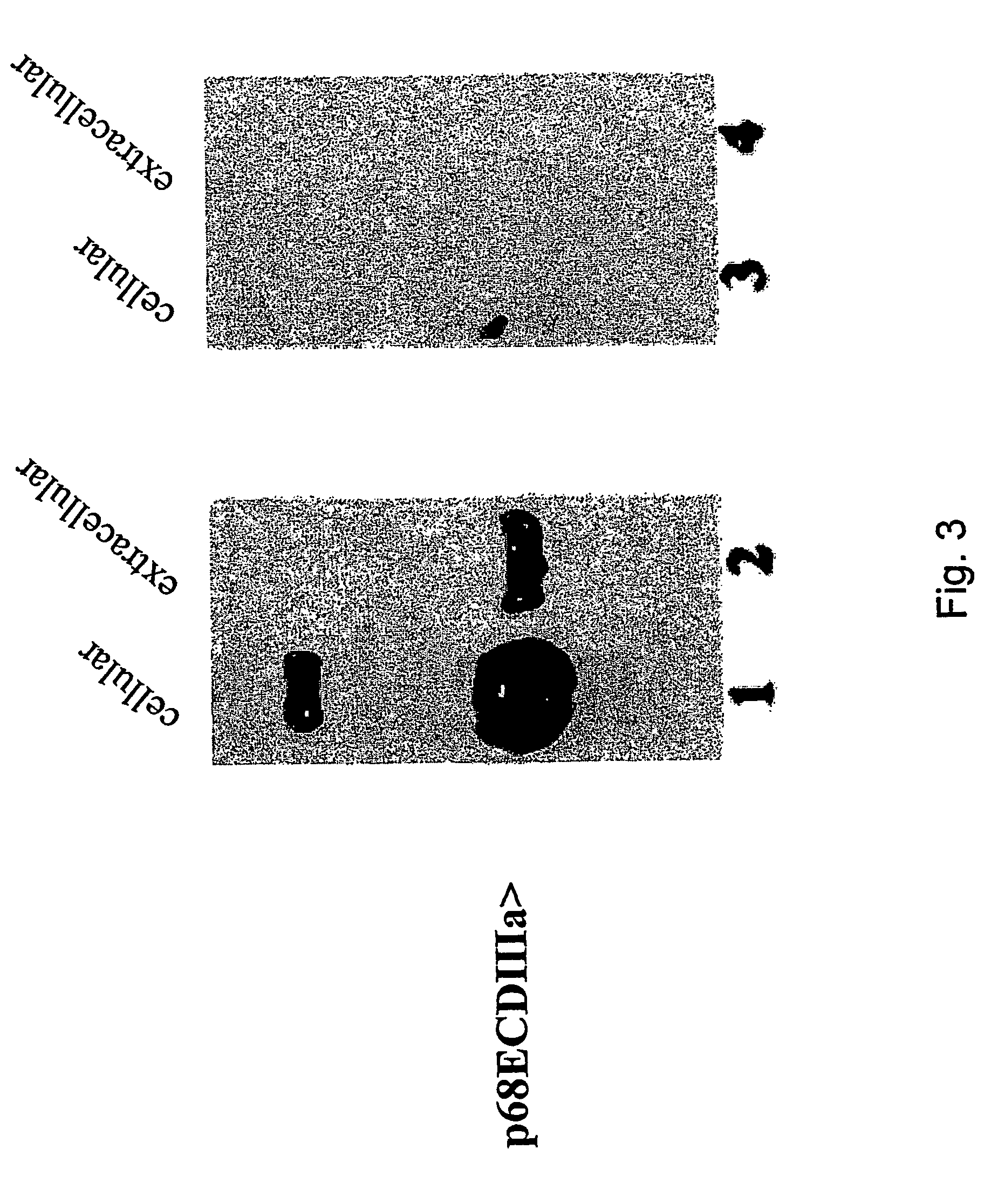Compositions and methods for treating cancer by modulating HER-2 and EGF receptors
a technology of egf receptors and compositions, applied in the direction of growth factor/regulator receptors, drug compositions, peptides, etc., can solve the problems of truncated extracellular domain polypeptides, ligands that directly bind with high affinity, and no particular therapeutic, diagnostic or research utility has been attributed to them. , to suppress the growth ofpl 85her-2, the effect of improving the prognosis of patients
- Summary
- Abstract
- Description
- Claims
- Application Information
AI Technical Summary
Benefits of technology
Problems solved by technology
Method used
Image
Examples
example 1
[0095]This example provides the results from an experiment to investigate HER-2 mRNA diversity within the extracellular domain (ECD) coding sequence using polymerase chain reaction (PCR). A cDNA library from SKOV-3 cells (American Type Culture Collection (Rockville, Md.) maintained in DMEM, supplemented with 10% fetal bovine serum and 0.05% gentamycin), an ovarian carcinoma cell line in which the HER-2 gene is amplified eight times (Tyson et al., Am. J. Obstet. Gynecol. 165:640-646, 1991) was examined using a forward primer specific for exon 1 (Tal et al., Mol. Cell. Biol. 7, 2597-2601, 1987) identical to nucleotides 142-161 and a reverse primer complementary to nucleotides 1265-1286 in exon 9 (Scott et al., Mol. Cell. Biol. 13:2247-2257, 1993). Briefly, The SKOV-3 cDNA library was provided by Origene Technologies, Inc. (Rockville, Md.), and was prepared from RNA extracted from SKOV-3 cells. RNA was extracted from SKOV-3 cells grown to 80% confluence on 15 cm plates with TriReagent ...
example 2
[0103]This example provides the results from experiments characterizing ECDIIIa as contiguous with HER-2 exons in the genome. To investigate the HER-2 gene structure in the region of the ECDIIIa sequence, a forward primer, identical to nucleotides 763-785, and a reverse primer, complementary to nucleotides 1265-1286 of the HER-2 cDNA, were used in the PCR on human genomic DNA. The amplification product was anticipated to span exon 5 (Tal et al., Mol. Cell. Biol. 7:2597-2601, 1987) to an exon which is immediately 3′ of the ECDIIIa sequence. Intron number and sizes were estimated based on PCR product sizes, restriction digest analysis, and partial sequence analysis of amplification products.
[0104]Next, human genomic DNA was examined using HER-2 exon-specific primers that directly flank the insert to determine the sequences immediately flanking the ECDIIIa sequence. A ˜430 bp product was amplified from normal human genomic DNA and from genomic DNA extracted from carcinoma cell lines SK...
example 3
[0105]This example shows that ECDIIIa is the only retained intron within the coding sequence of HER-2 mRNA. To determine whether additional introns were retained in the mRNA containing the ECDIIIa insert sequence, the reverse transcriptase-polymerase chain reaction (RT-PCR) was employed. First, a forward primer identical to 5′ HER-2 cDNA sequence at 142-161 which spans the initiation codon, and a reverse primer complementary to the 3′ ECDIIIa sequence were employed with SKBR-3 and SKOV-3 cDNA. A product of 1.3 kb was amplified, which is the size expected if the product contained no introns other than intron 8. Amplification of the 3′HER-2 coding sequence was then performed using a forward primer identical to 5′ ECDIIIa sequence and a reverse primer complementary to 3′HER-2 cDNA sequence at nucleotides 3898-3919, which spans the p185HER-2 termination codon. A product of 2.9 kb was amplified, which is the size expected from the HER-2 cDNA if no additional introns were retained.
[0106]F...
PUM
| Property | Measurement | Unit |
|---|---|---|
| affinity binding constant | aaaaa | aaaaa |
| pH | aaaaa | aaaaa |
| pH | aaaaa | aaaaa |
Abstract
Description
Claims
Application Information
 Login to View More
Login to View More - R&D
- Intellectual Property
- Life Sciences
- Materials
- Tech Scout
- Unparalleled Data Quality
- Higher Quality Content
- 60% Fewer Hallucinations
Browse by: Latest US Patents, China's latest patents, Technical Efficacy Thesaurus, Application Domain, Technology Topic, Popular Technical Reports.
© 2025 PatSnap. All rights reserved.Legal|Privacy policy|Modern Slavery Act Transparency Statement|Sitemap|About US| Contact US: help@patsnap.com



